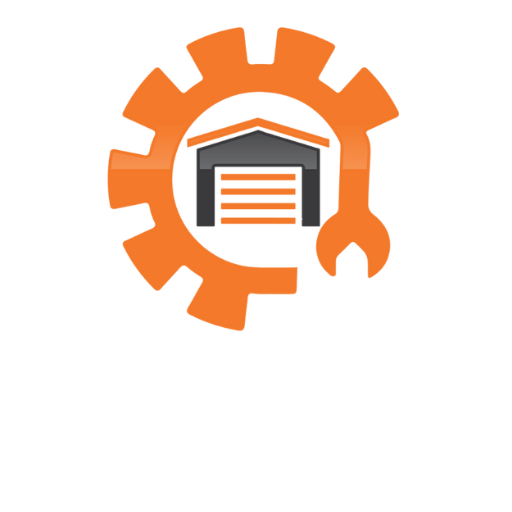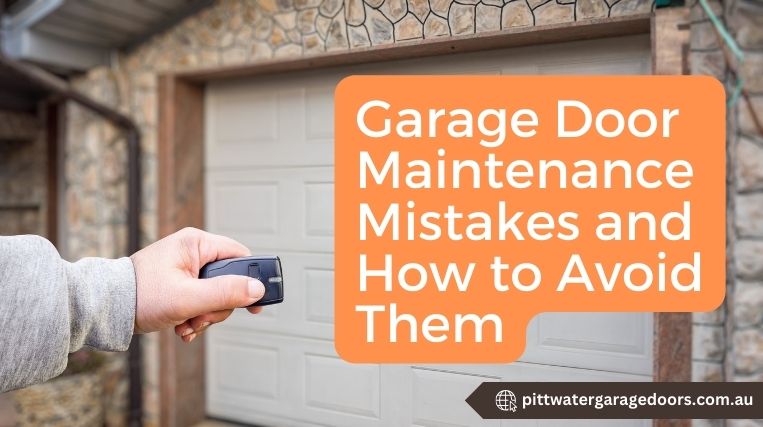Proper garage door maintenance is essential for its longevity and safe operation. However, many homeowners unknowingly make mistakes that can lead to costly repairs or safety hazards.
In this garage door guide, we’ll see common garage door maintenance mistakes and provide practical strategies to help you avoid them, ensuring your garage door remains functional and safe for years.
Table of Contents
8 Garage Door Maintenance Mistakes and How to Avoid Them
Below, we will discuss the 8 most frequent garage door maintenance mistakes and provide practical tips on avoiding them.
1. Lack of Regular Inspection
Regular inspection identifies potential issues before they escalate into costly repairs or safety hazards.
The key components to inspect include the springs, cables, rollers, hinges, and tracks to ensure they function correctly and are free from damage or wear.
The recommended frequency of inspection for garage doors is at least once every six months to catch any problems early and ensure smooth operation.
2. Neglecting Lubrication
Lubricating moving parts reduces friction, which helps prevent premature wear and tear on the garage door system’s components.
The types of lubricants to use include silicone-based lubricants or white lithium grease, as they are designed specifically for garage door applications and provide long-lasting lubrication without attracting dust or debris.
Proper lubrication techniques involve applying a small amount of lubricant to moving parts such as rollers, hinges, and tracks, ensuring even coverage without over-application, and wiping away any excess to prevent dirt or grime accumulation.
3. Ignoring Balance and Alignment
The impact of imbalance on door functionality is significant. It can strain the door opener mechanism and cause premature wear and tear.
It can also result in uneven movement and noisy operation, compromising the safety and efficiency of the garage door system.
The Methods to check balance and alignment typically involve disconnecting the door from the opener and manually moving it halfway open.
Then, technicians assess whether the door remains in position or tends to drift, indicating an imbalance. Additionally, visual inspection of tracks, rollers, and springs helps identify alignment issues.
Balance and alignment must be adjusted to ensure smooth and efficient garage door operation. This adjustment may involve tightening or loosening tension springs, realigning tracks, or changing the door’s position on its hinges.
By maintaining proper balance and alignment, you can prolong the lifespan of your garage door system and minimise the risk of malfunctions.
4. Misusing the Emergency Release Cord
The purpose of the emergency release cord is to disengage the garage door opener from the door, allowing for manual operation in case of a power outage or malfunction.
Common misuse scenarios of the emergency release cord include accidentally pulling it when the door is not in an emergency, which can lead to unnecessarily disengaging the opener.
Correct usage guidelines for the emergency release cord involve only removing it when necessary, such as during a power outage or when the door is stuck, and ensuring the door is entirely closed before re-engaging the opener.
5. DIY Repairs without Proper Knowledge
Risks associated with DIY repairs include causing further damage to the garage door system, personal injury due to lack of expertise, and voiding warranties by tampering with components incorrectly.
Professional assistance is necessary when dealing with complex garage door issues such as broken springs or malfunctioning openers.
Attempting repairs without proper training and tools can lead to accidents or exacerbate the problem.
Guidelines for safe DIY maintenance tasks include carefully reading the manufacturer’s instructions, using appropriate safety gear such as gloves and goggles, and knowing when to stop and seek professional help if a task seems beyond your skill level or expertise.
6. Using Incorrect Cleaning Products
Harsh cleaning agents can damage the surface of your garage door, leading to discolouration, corrosion, or deterioration of the materials over time.
It’s best to use mild, non-abrasive cleaners such as dish soap mixed with water for routine cleaning. Soft brushes or cloths should gently scrub dirt and grime, then rinse with clean water.
Regularly clean your garage door using appropriate cleaning products and techniques to maintain its aesthetic appeal.
Additionally, consider applying a protective coating or wax to the surface to help preserve its appearance and protect it from environmental damage.
7. Overlooking Spring Maintenance
The springs in a garage door system play a crucial role in counterbalancing the door’s weight, enabling smooth opening and closing. The door may become difficult to operate without adequately functioning springs or pose safety risks.
Signs of spring wear or damage include visible rust, fraying or stretching of the spring coils, uneven door movement, or excessive noise during operation.
These indicators suggest the springs must be inspected and replaced to ensure safe and efficient garage door operation.
Experienced technicians should inspect and maintain garage door springs. They can identify issues and safely perform necessary repairs or replacements.
Regular professional servicing can help prevent sudden spring failures and prolong the lifespan of the entire garage door system. Check our article on signs of broken garage door springs to learn more about spring maintenance and troubleshooting.
8. Skipping Professional Maintenance Services
Professional maintenance services offer expertise and experience to thoroughly inspect and maintain your garage door, identifying issues before they escalate.
They can ensure all components are functioning optimally, maximising the lifespan of your garage door and minimising the risk of unexpected breakdowns.
For optimal garage door performance and safety, it’s recommended to schedule professional inspections at least once a year.
However, if your door experiences heavy usage or if you notice any unusual sounds or behaviours, more frequent inspections may be necessary to address potential issues promptly.
Finding a reliable garage door maintenance provider involves researching local companies, checking customer reviews and testimonials, and verifying their credentials and certifications.
Additionally, asking for recommendations from friends, family, or neighbours who have used similar services can help select a trustworthy provider.
Takeaway
Proper garage door maintenance is essential for ensuring its longevity and safe operation. By avoiding common mistakes such as neglecting lubrication, ignoring balance and alignment, and attempting DIY repairs without proper knowledge, homeowners can prolong the lifespan of their garage door systems and minimise the risk of costly repairs or safety hazards.
Scheduling regular professional maintenance services and finding a reliable provider further ensures your garage door’s continued functionality and safety for years.


